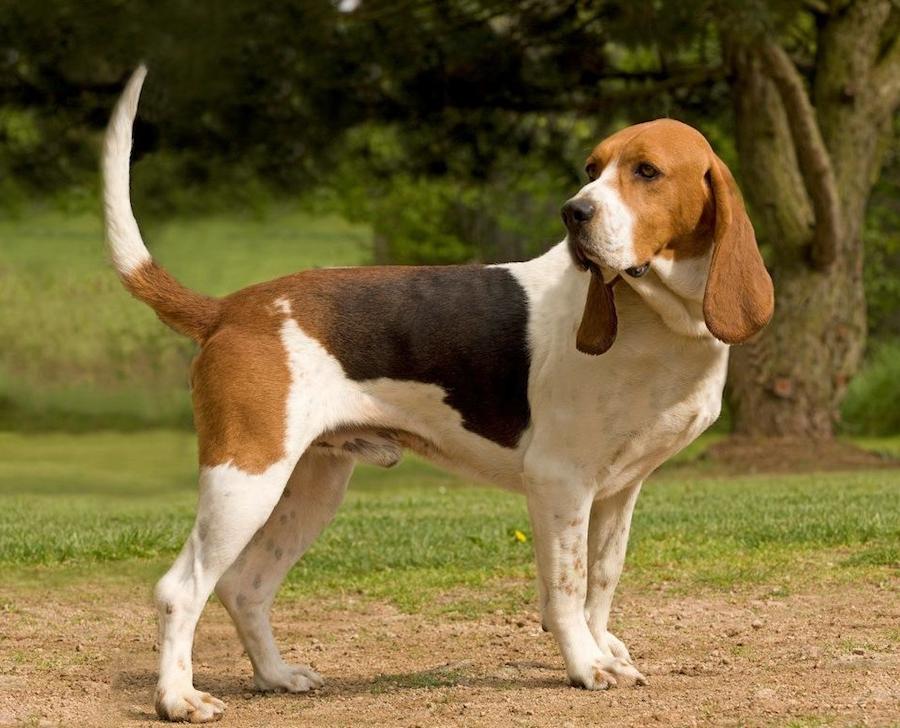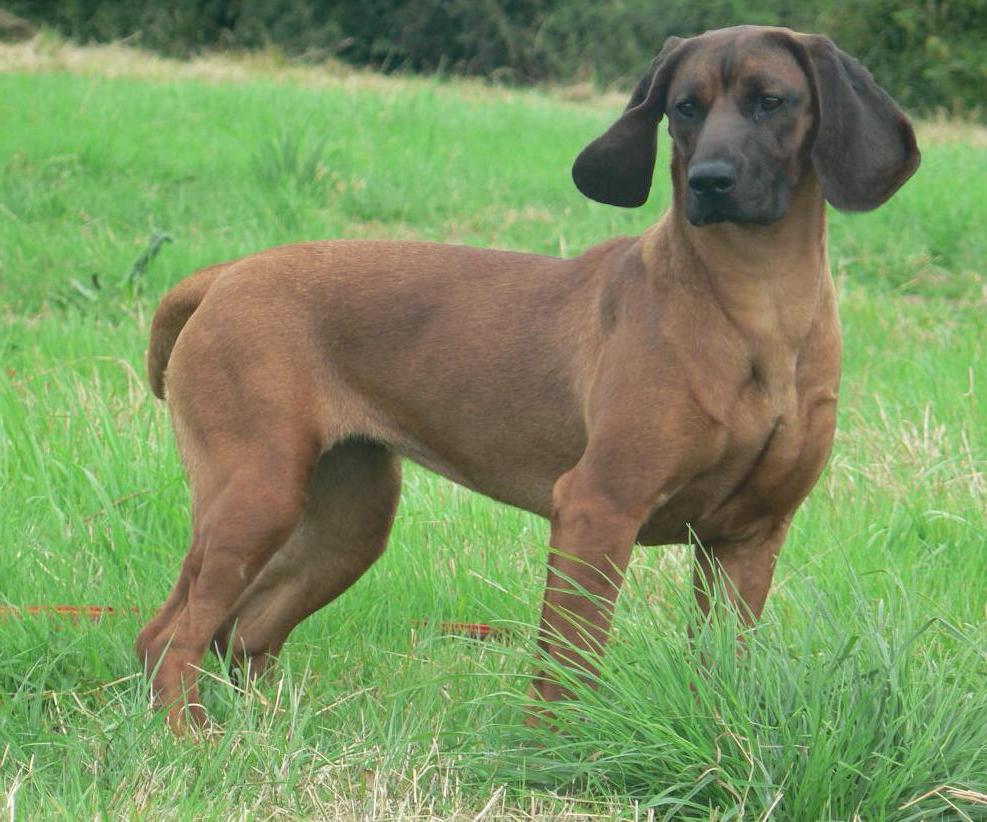Think hound dogs are just another breed? Think again. These remarkable dogs have been by our side for centuries, playing a crucial role in hunting. Known for their keen sense of smell and relentless tracking abilities, hound dogs have been indispensable to hunters worldwide. But there’s more to them than just their hunting prowess. This article aims to dive into the fascinating world of hound dogs, exploring their unique characteristics, rich history, and the care they require. Whether you’re a seasoned dog owner or just curious about these incredible animals, you’ll find plenty to learn and appreciate about hound dogs. So, let’s embark on this journey to understand what makes these dogs truly special.
History and Origin of Hound Breeds

Early Development of Hound Breeds
Hound breeds have a storied past, tracing back thousands of years. These dogs were among the first to be domesticated for specific tasks, primarily hunting. Their development was driven by the need for dogs that could track and chase game over long distances. Ancient civilisations, from the Egyptians to the Greeks, recognised their value and began refining their abilities. Over time, selective breeding honed their skills, creating the diverse group of hounds we know today.
Role in Hunting and Tracking
Hounds have always been the hunters’ best mates. Their exceptional sense of smell and stamina made them perfect for tracking game. Whether it was the scent hounds, like the Beagle, following a trail, or the sight hounds, like the Greyhound, chasing down prey, these dogs were indispensable. Their ability to work tirelessly over varied terrain made them a favourite among hunters across the globe.
Key Historical Figures and Regions
Throughout history, several figures and regions have been pivotal in the development of hound breeds. In England, the Foxhound was refined by the nobility for fox hunting. Meanwhile, in the Middle East, the Saluki was cherished by Bedouins for its speed and agility. These regions and their people played a crucial role in shaping the hounds we admire today, each breed carrying a piece of history in its lineage.
Physical Characteristics of Hound Dogs

Appearance
Hound dogs come in a variety of sizes and colours, each with its own unique charm. From the small and compact Beagle to the tall and sleek Greyhound, there’s a hound for every preference. Their coats can range from short and smooth to long and wiry, often featuring distinctive markings like spots or patches. These markings not only add to their visual appeal but also help in identifying individual dogs during hunts.
Unique Physical Traits
One of the standout features of hound dogs is their incredible sense of smell. This trait is particularly pronounced in scent hounds, such as the Bloodhound, which can follow a trail that’s days old. Their long ears and loose skin help trap scent particles, enhancing their tracking abilities. Sight hounds, on the other hand, boast keen eyesight and remarkable speed, making them excellent at spotting and chasing down prey over vast distances.
Temperament and Behaviour of Hound Dogs
Typical Personality Traits
Hound dogs are known for their loyalty and intelligence. They form strong bonds with their families and are often eager to please. Their energy levels can vary, with some breeds being more laid-back while others are always ready for action. This makes them versatile companions, whether you’re looking for a couch buddy or a jogging partner.
Suitability as a Family Pet and Working Dog
These dogs are not just great hunters; they’re also fantastic family pets. Their friendly nature and adaptability make them suitable for households with children. As working dogs, they excel in roles that require tracking and scent detection, thanks to their keen senses and determination.
Interaction with Children and Other Animals
Hound dogs generally get along well with children, displaying patience and gentleness. However, their hunting instincts can sometimes make them a bit too curious about smaller animals. Early socialisation is key to ensuring they interact well with other pets. With the right training, they can be a harmonious addition to any family.
Training and Exercise Needs of Hound Dogs
Importance of Early Training and Socialisation
Getting a hound dog off to a good start with early training and socialisation is crucial. These dogs are naturally curious and can be a bit stubborn, so introducing them to different environments, people, and other animals early on helps shape their behaviour. This foundation ensures they grow into well-adjusted adults, ready to take on the world with confidence.
Recommended Training Techniques
When it comes to training hound dogs, patience and consistency are key. Positive reinforcement works wonders, as these dogs respond well to rewards and praise. Short, engaging sessions keep their attention and make learning fun. Remember, hounds are intelligent but can be easily distracted by scents, so keeping them focused is essential.
Daily Exercise Requirements and Activities They Enjoy
Hound dogs are active and need plenty of exercise to stay happy and healthy. Daily walks, playtime, and mental stimulation are a must. They love activities that engage their senses, like scent games or agility courses. Whether it’s a long walk in the park or a game of fetch, keeping them active is key to a content hound.
Health and Lifespan of Hound Dogs

Common Health Issues
Hound dogs, like any breed, have their share of health concerns. Some common issues include hip dysplasia, ear infections, and bloat. Their long ears, while charming, can trap moisture and debris, leading to infections if not cleaned regularly. Additionally, their deep chests make them prone to bloat, a serious condition that requires immediate attention.
Average Lifespan and Health Tips
On average, hound dogs live between 10 to 14 years. To keep them healthy, regular vet check-ups are essential. A balanced diet and consistent exercise help maintain their weight and overall well-being. Mental stimulation is just as important, so engage them with puzzles and scent games to keep their minds sharp.
Preventative Care Recommendations
- Regular ear cleaning to prevent infections.
- Routine dental care to avoid gum disease.
- Annual vet visits for vaccinations and health screenings.
- Monitor their diet to prevent obesity.
- Provide plenty of exercise to keep them fit and happy.
Grooming and Maintenance of Hound Dogs
Coat Care and Grooming Routines
Hound dogs come with a variety of coat types, each requiring its own grooming routine. Short-haired breeds like the Beagle need a quick brush once a week to keep their coat shiny and healthy. For those with longer coats, like the Afghan Hound, more frequent grooming is necessary to prevent tangles and mats. Regular brushing not only keeps their coat looking great but also helps distribute natural oils, promoting skin health.
Shedding and Seasonal Grooming Tips
Shedding is a natural part of a hound dog’s life, and it can vary with the seasons. During spring and autumn, you might notice an increase in shedding as they transition between their winter and summer coats. To manage this, increase the frequency of brushing to remove loose hair and reduce the amount of fur around your home. A good quality brush or grooming mitt can make this task easier and more effective.
Regular grooming sessions also provide an opportunity to check for any skin issues or parasites, ensuring your hound stays in top condition. Remember, a well-groomed hound is not only more comfortable but also a joy to have around.
Diet and Nutrition for Hound Dogs

Nutritional Needs for Optimal Health
Hound dogs are active and require a balanced diet to support their energy levels and overall health. High-quality protein is essential for muscle maintenance, while healthy fats provide the energy they need for their active lifestyle. Vitamins and minerals, like calcium and phosphorus, are crucial for bone health, especially in growing pups.
Foods to Include and Avoid
Include lean meats, whole grains, and vegetables in their diet to ensure they get a variety of nutrients. Foods rich in omega-3 fatty acids, like fish, can help maintain a healthy coat and skin. Avoid foods high in fillers, artificial preservatives, and excessive fats, as these can lead to obesity and other health issues.
Feeding Schedules and Portion Recommendations
Establishing a consistent feeding schedule is important. Adult hounds typically do well with two meals a day, while puppies may need three to four smaller meals. Portion sizes should be based on their age, weight, and activity level. Always consult with a vet to tailor their diet to their specific needs, ensuring they stay fit and healthy.
Fun Facts and Trivia About Hound Dogs

Interesting Tidbits About the Breed
Hound dogs are a fascinating bunch with some unique quirks. Did you know that the Bloodhound’s sense of smell is so accurate that its tracking results can be used as evidence in a court of law? That’s right, these dogs are not just sniffing around for fun. And then there’s the Beagle, which has been a favourite among royalty, including Queen Elizabeth I, who adored her pocket-sized Beagles.
Famous Hound Dogs in Media or History
Hound dogs have made their mark in pop culture and history. Snoopy, the beloved Beagle from the Peanuts comic strip, is perhaps one of the most famous hounds in media. In history, we have Laika, a mixed-breed hound who became the first animal to orbit Earth, paving the way for human space exploration. These dogs have not only captured our hearts but have also played significant roles in shaping history and entertainment.
Final Thoughts
Hound dogs are more than just skilled hunters. Their rich history and unique traits make them fascinating companions. From their ancient origins to their modern roles as family pets, hound dogs embody a blend of loyalty, intelligence, and adaptability. Embracing the joys and responsibilities of owning a hound can lead to a rewarding relationship filled with adventure and companionship. Whether you’re considering a hound for hunting or as a family pet, these remarkable dogs promise to enrich your life in countless ways.
